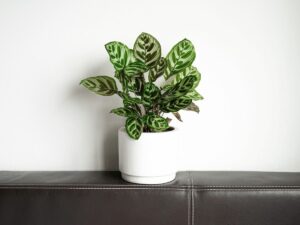How to get more oxygen? To increase oxygen intake, practice deep breathing exercises and engage in regular physical activity while ensuring proper hydration and maintaining good posture can be the best option.
With extensive expertise in oxygen therapy, I offer a rich understanding and knowledge regarding the benefits of it, helping you understand how it can improve health and well-being.
In this article will delve into the mechanics of how to get more oxygen naturally, exploring its benefits, and practical advice to meet the required oxygen body intake.
Keep reading to learn more!
Oxygen saturation represents the percentage of hemoglobin binding sites in the bloodstream occupied by oxygen. Ideally, oxygen saturation levels should cover around 95% to 100% for healthy individuals. When these levels drop, it signals that tissues and organs are not receiving enough oxygen, which can lead to various health complications.
Maintaining optimal oxygen saturation is essential for both physical and mental vitality. It’s the silent heartbeat of our wellness, underpinning every moment of exertion, rest, and recovery. This knowledge guides the development of solutions that support enhanced oxygen delivery, ensuring that life’s essential breath is never in short supply and I know no one wants it, right?
Understanding oxygen saturation gives us insight into the importance of oxygen in our wellness journey. With this foundation, let’s explore natural ways to enhance oxygen intake. Here are 3 effective strategies:
Incorporating indoor plants into environments can significantly boost oxygen levels. Plants like snake plant not only purify the air but also add a refreshing touch of green, making spaces not just healthier but visually soothing as well. It is also required to plant more trees every year. As of 2022, China has the most trees planted in 2021 at more than 2.5 billion trees, as per Trees Down Under. Wow, this country is amazing!

Engaging in deep breathing techniques enhances oxygen intake but also promotes relaxation, offering a peaceful retreat from the hustle of daily life. For example, diaphragmatic breathing, helps maximize lung capacity, allowing more oxygen to enter the bloodstream.

Regular exercise, especially outdoors, increases the rate of oxygen consumption by the muscles. Activities like walking, jogging, or cycling stimulate heart rate and breathing, improving overall oxygen saturation levels and boosting cardiovascular health.

Exploring natural ways to enhance oxygen intake highlights the significance of our surroundings and lifestyle in optimizing oxygen levels. Building on this, here are focused techniques to further increase oxygen through breathing:
This technique involves deep breathing through the diaphragm, allowing more air to flow into your lungs. It not only maximizes oxygen intake but also reduces stress, making it a powerful tool for enhancing both physical and mental well-being.

This breathing pattern encourages a full oxygen exchange. This rhythmic breathing involves inhaling for 4 seconds, holding the breath for 7 seconds, and exhaling slowly for 8 seconds. It’s an excellent technique for calming the mind and improving overall oxygenation, making it ideal for moments of stress or before sleep, thats why this technique is my favorite.
This method is particularly effective for people with respiratory issues but is beneficial for anyone seeking to enhance their oxygen saturation. By exhaling through pursed lips, it creates a slower, more controlled breathing pattern, increasing the amount of oxygen that the lungs can absorb.
Delving into breathing techniques for increased oxygen showcases how targeted breathing can elevate our oxygen intake. To complement these methods, please take note of these lifestyle adjustments that further enhance oxygenation:
Integrating foods high in antioxidants and rich in essential nutrients supports the body’s ability to use oxygen more effectively. For example , incorporating leafy greens, fruits, and nuts into meals can help improve blood flow and oxygen levels, energizing the body from within.

Water plays a crucial role in maintaining optimal blood oxygen levels. Staying well-hydrated helps thin the blood, which facilitates smoother and more efficient oxygen transport throughout the body, keeping the organs well-oxygenated and functioning at their best.
Good sleep hygiene is vital for the body to repair and regenerate, allowing for better oxygenation. Ensuring a restful sleep environment and aiming for 7-9 hours of sleep nightly can significantly impact how effectively our bodies process and utilize oxygen, leaving us refreshed and rejuvenated every morning.

Building on lifestyle adjustments for enhanced oxygenation, we recognize the significant role our environment plays in our overall oxygen intake. To further support this, here are effective strategies for improving indoor air quality:
Plants like the peace lily and rubber plant not only beautify indoor spaces but are champions at purifying the air. They absorb toxins and carbon dioxide, releasing oxygen back into the environment, thus enhancing the air quality and oxygen availability in indoor spaces. Seeing different plants makes us calm and set us in a good mood, right?

Opening windows daily to allow fresh air to circulate can significantly reduce indoor pollutants and improve oxygen levels. This simple act ensures that stale air is replaced with fresh, oxygen-rich air, making breathing easier and enhancing well-being.
Air purifiers with HEPA filters can capture a high percentage of airborne particles, including pollutants and allergens that can impede oxygen intake. By cleaning the air we breathe, these devices help ensure that every breath is as nourishing as possible.

Minimizing the use of volatile organic compounds (VOCs) found in many household cleaning agents, paints, and air fresheners can drastically improve indoor air quality. Opting for natural and non-toxic alternatives not only supports better oxygen intake but also protects the health of everyone in the space.
Following the steps to improving indoor air quality for better oxygen intake, enhancing the air we breathe indoors is just the beginning. For those seeking to significantly increase their oxygen intake, here are advanced methods worth considering:
This medical treatment involves breathing pure oxygen in a pressurized room or chamber. HBOT can dramatically increase oxygen absorption in the body, aiding in the healing process and improving overall health by delivering oxygen to areas that are otherwise hard to reach. For those who are looking for best quality chambers, I recommend Oxygen-Ark.
Athletes and fitness enthusiasts often use high-altitude training to boost their oxygen efficiency. Training in environments with reduced oxygen levels can stimulate the body’s production of red blood cells, enhancing oxygen delivery and endurance performance once back at sea level.
Though a more niche market, supplements are available in various forms, including sprays and liquids that claim to increase oxygen levels in the bloodstream. While the efficacy of these products varies, they represent a frontier in the quest to boost oxygen intake. Visit Oxygen-Ark for more information about oxygen supplements and to know other options.
Building upon the exploration of advanced methods to increase oxygen intake, technology and medicine offer even more avenues for enhancing our body’s oxygen utilization. To further push the boundaries of what’s possible, here are key technological aids and medical interventions:
These compact and non-invasive devices are crucial for monitoring oxygen saturation levels in the blood. By simply attaching to a fingertip, pulse oximeters provide immediate feedback, enabling individuals and healthcare providers to make informed decisions about oxygen therapy and other needs in real-time.
This method involves delivering oxygen directly into the bloodstream through an IV, offering a rapid increase in oxygen levels. It’s a more intensive intervention typically reserved for critical care scenarios but highlights the medical community’s ability to directly enhance oxygenation in emergencies.
Here’s a table detailing the key aspects of Intravenous Oxygen Therapy:
| Aspect | Description | Application |
| Delivery Method | Oxygen is administered directly into the bloodstream via an intravenous (IV) line. | Ensures immediate oxygen availability to tissues needing urgent oxygenation. |
| Oxygen Level Increase | Provides a rapid increase in blood oxygen levels. | Particularly beneficial in critical care scenarios where quick oxygenation is crucial. |
| Intervention Intensity | Considered a more intensive medical intervention than non-invasive methods. | Reserved for emergency situations or severe hypoxemia. |
| Medical Supervision | Requires close medical supervision and monitoring due to its invasive nature. | Ensures patient safety and optimal administration of therapy. |
| Emergency Use | Primarily utilized in acute care settings for life-threatening conditions. | Highlights the versatility of oxygen therapy in managing critical health issues. |
On the cutting edge of science, researchers are exploring how genetic modifications and stem cell therapies can increase the body’s natural ability to utilize oxygen more efficiently. These innovations hold the promise of not just treating but potentially curing conditions that impair oxygenation, offering hope for a future where everyone breathes easier.
For some insightful reads, we’ve curated a list of recommended articles just for you:
Still haven’t found what you’re looking for? Don’t hesitate to contact us. We’re available around the clock to assist you.
In the journey to enhance oxygen intake, we’ve traversed through natural methods. These approaches not only illuminate the importance of oxygen in our health and well-being but also underscore the innovative ways we can improve oxygen saturation for a healthier, more vibrant life.
For those who are looking to take a significant leap forward in oxygen therapy, Oxygen-Ark, a leading manufacturer of hyperbaric chambers, stands at the forefront of technological innovation. Contact us today!
Get in touch with us and unlock your full well-being potential!
The OxygenArk team is here to assist you every step of the way.